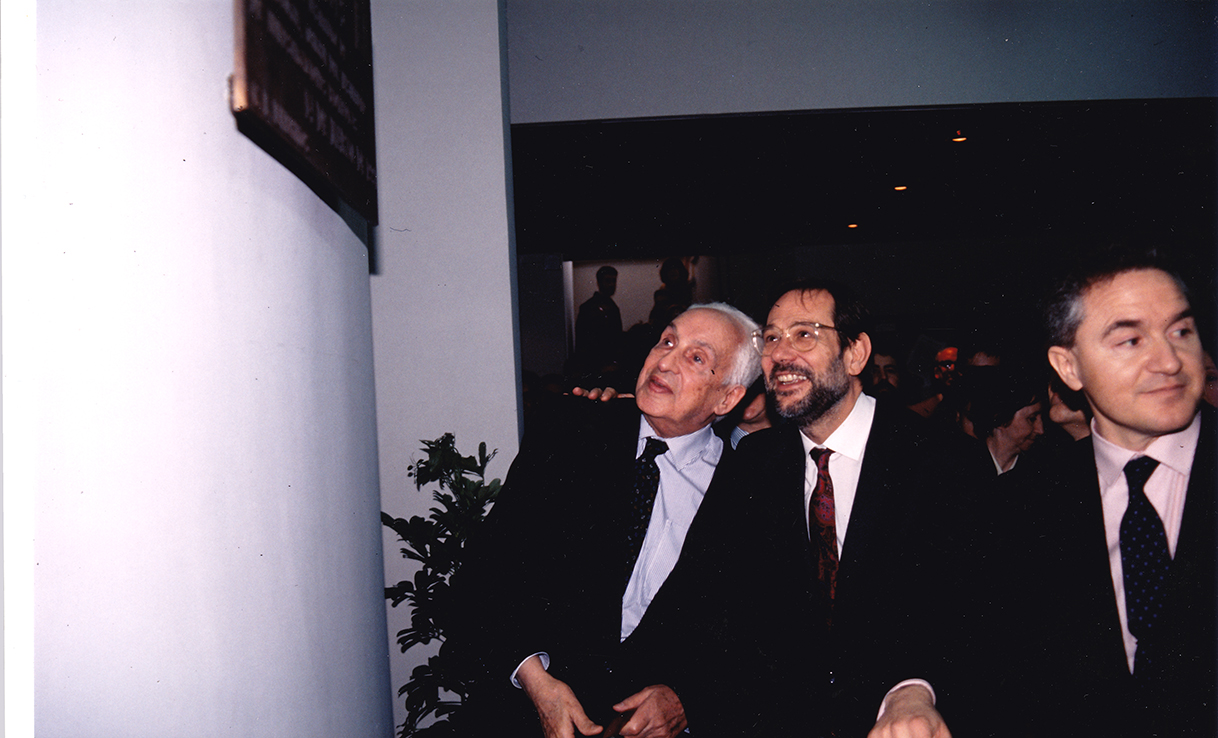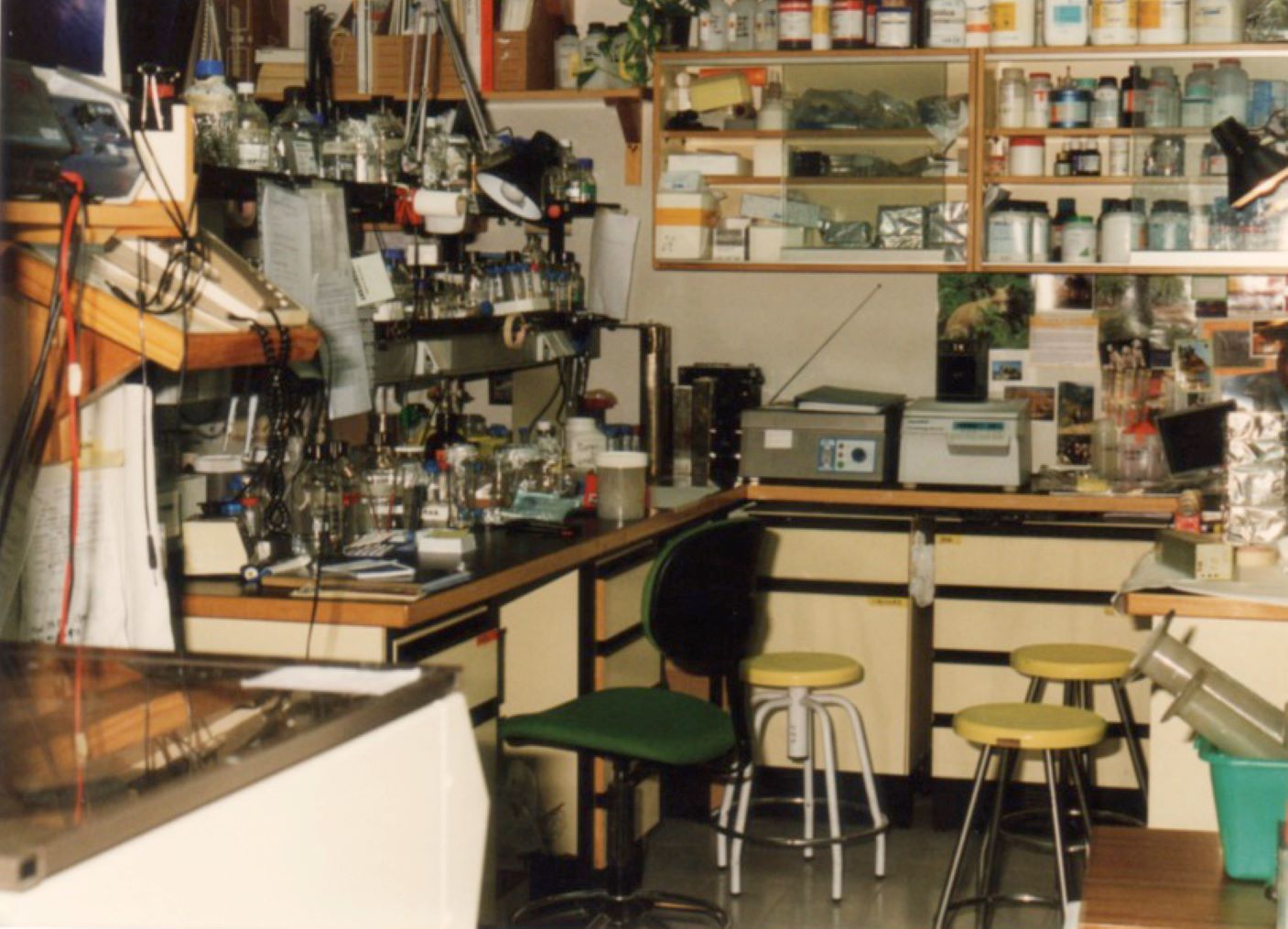En sus orígenes, el Instituto de Investigaciones Biomédicas Sols-Morreale surgió como consecuencia de la evolución natural de la nueva Facultad de Medicina diseñada con criterios innovadores en el marco de la creación de la Universidad Autónoma de Madrid (UAM) en 1968. Identificando la importancia de que la docencia universitaria debía ir íntimamente unida a la labor investigadora, y ante la necesidad de dotar a la nueva Facultad de profesorado, se solicitó a Alberto Sols, por aquel entonces Profesor de Investigación del CSIC en el Centro de Investigaciones Biológicas (CIB) de Madrid, en el que dirigía el Instituto de Enzimología, que se hiciera cargo de la enseñanza de la Bioquímica en la nueva facultad. Alberto Sols era ya en aquella época una figura relevante como impulsor de la investigación bioquímica en España. Baste mencionar que había sido uno de los fundadores de la Sociedad Española de Bioquímica en 1963. Sols se trasladó con todo su equipo a la Facultad de Medicina de la UAM, fue nombrado catedrático de la Universidad y en torno a su figura se constituyó el recién creado Departamento de Bioquímica.
Pocos años después, en 1975, desde el Instituto Gregorio Marañón del CIB, se incorporó el grupo liderado por la también Profesora de Investigación del CSIC Gabriella Morreale y su marido Francisco Escobar, que constituyeron el Instituto de Endocrinología Experimental. Su incorporación aumentó de manera significativa el personal del CSIC que desarrollaba sus actividades en la Facultad de Medicina, lo que propició que en 1984 se creara el Instituto de Investigaciones Biomédicas (IIB) como centro propio del CSIC mediante la fusión del grupo de Endocrinología Experimental dirigido por Morreale y el del Instituto de Enzimología dirigido por Sols. El IIB quedó físicamente ubicado en locales de la facultad de medicina de la UAM, que compartía con el personal de la Universidad que se había ido incorporando durante esos primeros años al Departamento de Bioquímica. Los profesores del Departamento adquirirían la condición de doctores vinculados al IIB y tendrían acceso a infraestructuras comunes en el marco de un convenio de colaboración entre el CSIC y la UAM firmado en 1988.
La progresiva incorporación de personal de ambas instituciones a las instalaciones del departamento de Bioquímica de la Facultad de Medicina, con la consecuente diversificación de las líneas de trabajo, y el exitoso desarrollo de las investigaciones que desarrollaban en el mismo hicieron necesaria la construcción de un nuevo edificio sede del IIB. Éste se construyó en una parcela del campus de la Facultad cedida en uso al CSIC que empezó a funcionar operativamente en 1989. A este edificio, que fue oficialmente inaugurado en marzo de 1991, se trasladó tanto parte del personal del CSIC como de los profesores del Departamento de Bioquímica.

Inauguración la sede del Instituto de Investigaciones Biomédicas en su nuevo edificio en marzo de 1991. De izquierda a derecha, Severo Ochoa, el ministro de Educación y Ciencia Javier Solana y el director del IIB José María Mato bajo la placa conmemorativa de homenaje a Alberto Sols. En segundo plano entre Javier Solana y José María Mato, Margarita Salas.
En 1993 se aprobó un nuevo convenio marco entre el CSIC y la UAM y se iniciaron conversaciones para un proyecto de centro mixto que englobaría al personal de ambas instituciones. Finalmente, en septiembre de 1998 el CSIC y la UAM firmaron un convenio de colaboración por el que se creaba el centro mixto de titularidad compartida denominado Instituto de Investigaciones Biomédicas Alberto Sols en reconocimiento a su labor e influencia en el desarrollo de la Bioquímica española. El edificio del CSIC fue ampliado alrededor de esa época mediante la construcción de nuevos laboratorios y dependencias. Tanto en el edificio del CSIC como en el Departamento de Bioquímica de la Facultad de Medicina de la UAM, los laboratorios están ocupados indistintamente por personal de las dos instituciones que desarrollan su trabajo en igualdad de condiciones.
 Uno de los laboratorios del nuevo edificio del IIB tras su puesta en marcha a principios de los años 90 del siglo pasado.
Uno de los laboratorios del nuevo edificio del IIB tras su puesta en marcha a principios de los años 90 del siglo pasado.
A partir de 2009 las siglas del instituto quedaron establecidas como IIBM para distinguirlo de otros centros del CSIC con denominaciones parecidas y hacer referencia a su localización en Madrid.
Con ocasión de la renovación del convenio CSIC-UAM de instituto mixto en julio de 2023, el IIBM modificó su denominación una vez más añadiendo junto a la mención de Alberto Sols, la de Gabriella Morreale, que había fallecido en 2017. Se reconocía así su relevancia en la creación del mismo, la importancia de su dilatada labor investigadora como impulsora de la Endocrinología Experimental, y la extraordinaria repercusión de su trabajo en salud pública. Así, el IIBM adquirió la denominación actual de Instituto de Investigaciones Biomédicas Sols-Morreale.